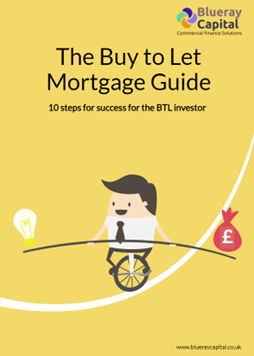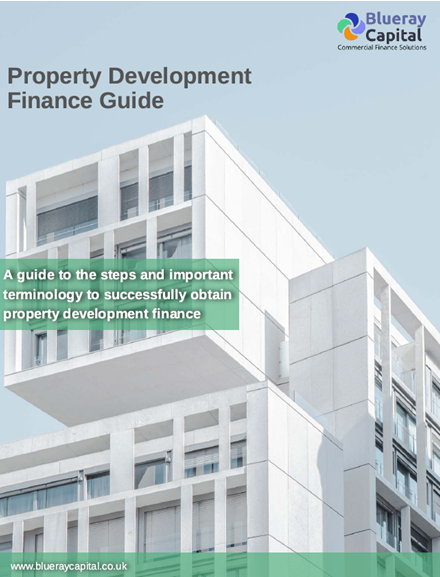The UK Bridging Finance Market
The bridging finance market is a large, important and competitive area of the UK property sector. Its 50+ lenders are responsible for lending almost £6bn, according to the EY UK Bridging Market Study 2021.
Bridging finance is an interim lending solution, used by companies and individuals, secured on a property for an agreed term, to solidify their position until a long-term financing option can be arranged.
The UK bridging market may be divided into regulated and unregulated lending with unregulated typically having a larger market share at ~60% than regulated bridging loans at ~40%, according to Bridging Trends quarterly infographic.
What is a Bridge Finance Loan?
A regulated bridging loan is one secured against a property that is currently occupied, or will imminently be occupied, by either the borrower or an immediate family member. The Financial Conduct Authority (FCA) offers additional protection to consumers by making sure they have clear information and advice from the lender or finance broker about the loan before they take it out. Regulated bridging loans can be either first or second charge and must abide by the same regulations that are applied to residential mortgages. They usually have a maximum term of 12 months, rolled up interest options and an exit strategy based on either the sale of a property or refinancing.
Unregulated bridging loans are those that do not involve the personal dwelling of the borrower, or an immediate family member. While many of the issues relating to bridging finance apply to both segments, this guide is aimed at the unregulated bridging finance borrower as this is the market segment in which Blueray Capital operates.
The Blueray Capital Bridging Finance Guide is designed to help those who are considering taking out a short-term loan secured on a residential or commercial property. It is not meant to be definitive but covers most of the elements involved in the unregulated bridging finance process and introduces important terminology.
20 Steps to Bridging Finance Success
- Reasons to bridge
There are several reasons why a borrower may require bridging finance on a property:
- Purchasing an investment property
- Financing a chain-break
- Mortgage delays
- Refurbishment
- Re-finance
- Business purposes
Perhaps unsurprisingly the most popular reason, accounting for around 25% of bridging loans, is purchasing an investment property for buy-to-let (BTL) investment purposes.
- Asset quality
The quality of the property asset is a key element of the lender’s underwriting decision. Lenders have defined criteria regarding geography, property type, location, minimum (and maximum) value, loan to value % and liquidity. The better the quality of the property asset, the more interesting it will be to bridging lenders.
- Not all properties are equal
Many lenders are truly agnostic when it comes to the property type but the list of properties not considered by some lenders includes pubs, hotels, catteries, nursing homes, charities and farms.
- Exit route
Equally important to the lender is the strength and certainty of the exit route or re-finance plan. This typically takes the form of a BTL mortgage on the asset, the sale of the asset, the sale of another asset or additional investor-led funding. The lender will require comfort on the likelihood of the re-finance being delivered at the quantum required and, in the timescale agreed. If it’s a BTL mortgage then a decision in principle (DiP) from the lender is normally required.
- 1st, 2nd (or 3rd!) charge
Most bridging lenders look for an unencumbered property on which they will take a 1st charge. Some lenders are prepared to consider a 2nd charge position and a handful may consider a 3rd charge. Moving away from a 1st charge position will reduce lender options and the loan amount & increase the cost.
- Loan term
The majority of bridging finance lenders will lend up to 18 or 24 months with a few offerings up to 36 months. There is very little incentive for a lender to invest the effort for anything less than 3 to 6 months interest, although there are some niche lenders who offer smaller loans for very short terms.
- The key metric
Introducing LTV, or loan-to-value, the main decision metric lenders use to determine the gross loan amount. It’s the key metric in property finance. Borrowers usually want to borrow as much as possible on the strength of the asset value but lenders have strict minimum and maximum guidelines, normally in the 50% to 75% LTV range. LTVs for commercial properties are usually lower than residential (and interest rates are higher).
- Valuation
During the turbulence of the last 2 years lender valuation requirements have adapted to accommodate travel restrictions and the shift to working from home. The preferred option is a valuation report by a RICS qualified surveyor. This involves a property visit, measurements & photographs resulting in a detailed report on the asset, its rental income potential and local sales comparisons. Lenders use a panel of surveyors usually offering 3 choices to the borrower who will need to pay the survey cost prior to instruction. Some lenders have begun to use desktop valuations and automated valuation models, especially for lower value assets or specific types of property. There can be surprises in the valuation outcome and so borrowers are advised to incorporate conservative values in their plans.
- Interest rate
The rate charged is normally expressed as a % rate such as 0.65%/month or 0.8%/month. The range offered currently is from 0.4% to 1.2%/month. The lower the LTV the lower the risk to the lender and therefore the lower the rate offered. While all borrowers want to pay the least amount there is value in speed, certainty, flexibility and efficiency, all of which influence the price a borrower may be willing to pay.
There are 3 interest re-payment methods: retained, serviced or rolled-up. Most lenders will offer a choice of retained or serviced with fewer lenders offering rolled-up, which is more common in development finance.
- Retained interest
Retained interest is the preferred lender model as it reduces their risk. The total interest charge for the whole term is deducted from the loan facility. On the basis the facility goes to term, just the principal, and any exit fee, will need to be paid. The benefit to the borrower of a retained interest approach is usually a higher LTV and a lower interest rate compared to the other two methods.
- Serviced interest
With the service interest approach the borrower pays interest that accumulates monthly, leaving the principal amount and any exit fee to be settled at the end of the term, or once the property exit plan is completed.
- Rolled-up interest
The borrower does not make any monthly interest payments during the loan term. Instead, interest is ‘rolled up’ and paid as a lump sum at the end of the loan term with the principal and any exit fee. This can result in interest being compounded and repayments at the end of the loan being larger than if interest was spread across the loan term. This is a preferred approach for borrowers who do not have regular cashflow, and therefore cannot cover regular interest costs. The lender will want to see a high quality property asset, good borrower standing and a robust exit strategy. This approach offers the lowest LTV and highest rate in comparison to the other two repayment methods.
- Arrangement fee
A bridging finance provider makes its return on the margin of interest received over its cost of capital. It covers some of its application process costs through an arrangement fee, normally 1% to 2% of the gross loan amount. This fee is deducted from the gross loan amount and usually shared with the commercial finance adviser, or broker, who has introduced the transaction and supported the client through the process.
- Other costs and fees
Bridging finance lenders have different pricing policies but other costs typically include:
Administration fee
- Monitoring or loan management fee
- Exit fee: a percentage of the gross loan amount deducted from the gross loan (or added to the loan) at the end of the term. Often it is zero but can be 1%.
- Early repayment charge, or ERC. Usually expressed as a minimum interest level or a percentage of the loan amount should the borrower settle before the loan term.
- Surveyor fee – as mentioned in point 8 above
- Legal costs of the lender are paid by the borrower
All costs are detailed on the bridging finance quote, indicative offer or term sheet before proceeding to the valuation and legal stage. At this point in the process there may be a small, but non-refundable, commitment fee which is deducted from the administration fee on completion. Most lenders do not require this as the borrower is showing commitment to the process by instructing and paying for the surveyor to produce the valuation report.
- Gross Loan
The gross loan is the amount the borrower will need to repay at the end of the term. It is derived from the property value (as confirmed in the valuation report) x the lender’s LTV %.
- Net loan
The net loan, often referred to as Day 1 proceeds, or the draw down amount, is the amount the borrower will receive on completion of the legal documentation. Assuming a retained interest bridging loan, the net loan is the gross loan less the arrangement fee, administration/monitoring fee and the retained interest for the full term.
- Decision in principle
A DiP, Quotation or Term Sheet details all the costs and terms of the bridging finance lender. Let’s assume a borrower requires bridging finance over 12 months secured on a £1m property. Assuming the property location and type meet the lender’s criteria and the lender is satisfied with the standing of the borrower, a retained interest bridging quote might detail the following:
Gross Loan: £750,000 (75% LTV)
Loan term 12 months (Minimum period: 3 months)
less
Retained interest £ 54,000 (.6%/month)
Arrangement fee £ 15,000 (2% fee)
Administration fee £ 1,000
Monitoring fee £ 0 (No fee)
Exit fee £ 0 (No fee)
Total deductions £ 70,000
Net Loan £680,000 (funds to be received by borrower)
Other costs:
Commitment Fee: £500 (due on DiP acceptance. A non-refundable cost paid to the lender,
deducted from the administration fee)
Valuation report: £1,750 (due on DiP acceptance. Paid to the surveyor firm once instructed)
Lender Legal Costs: £1,500 (due once the valuation report is received and the lender has confirmed
the offer. The cost is usually on a sliding % scale relating to the gross loan).
A serviced interest loan would include a similar set of figures except the interest cost would show the monthly interest to be paid, rather than the total deducted for the whole term. Also, the LTV % would be lower and the interest rate higher, reflecting additional lender risk of this repayment model.
- Know your client
Commonly referred to as KYC, this is a security process all lenders are required to complete for fraud prevention purposes. By gathering full identification details and completing various credit checks they can ensure the borrower is legitimate with sufficient credit status and not on any sanctions list. Some lenders are moving to electronic systems which are online and automated while others require certified copies of a driving licence or passport and a recent utility bill. The process is normally completed after the valuation report once a credit-backed final offer is received, and the legal process is underway.
- Redemption statement
To settle the bridging loan obligation the borrower will need to activate the designated exit route as described in Point 4 above so that the required funds are available to repay the gross loan amount. At this point the lender will create a redemption account showing any additional costs (exit fee/penalties) or reimbursements (refund of retained interest). Once the lender is fully satisfied the loan is settled, the charge on the property may be released. Note it is prudent for the borrower to confirm release of the legal charge.
- Timescales
Bridging lenders compete across all the lending criteria and time to complete is one of the important differentiators. Due to the sequential nature of the process (enquiry-quote-valuation-final offer-legals), the number of firms involved (lender, surveyor, solicitor, borrower and borrower’s solicitor) the process normally takes between 2-4 weeks. However, for certain bridging transactions these timescales may be compressed into days.
Why use Blueray Capital?
As outlined in this guide, there are numerous aspects to bridging finance and navigating them effectively will increase your chances of success with bridging lenders. There are good reasons to use a specialist advisory firm, such as Blueray Capital, to achieve this success:
- We have relationships with all the leading bridging lenders. We know their lending criteria and application process requirements and provide prompt response on appetite and indicative terms.
- We make the process easier for the lender and they trust us. Applications introduced by advisers have greater chance of success than a direct approach. We will have done due diligence on the client, established the transaction is robust, prepared relevant information and will present it in a lender-friendly format.
- For good quality deals it’s likely that multiple lenders will express interest which provides the client with more choice and potentially enhanced terms. A key adviser role is to establish lender appetite quickly and help achieve optimum terms.
- Our fees are paid by the lender as part of their arrangement fee and so our service does not represent an additional cost to the borrower.
The bridging finance process usually starts with a conversation with Blueray Capital. We can efficiently assess the options available and usually provide indicative terms in minutes. We will then work with you exclusively to submit the application to selected bridging finance partners and guide you through the process to a successful and prompt completion.



